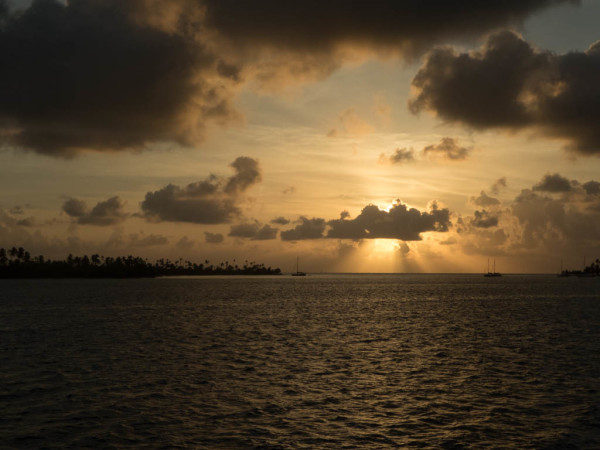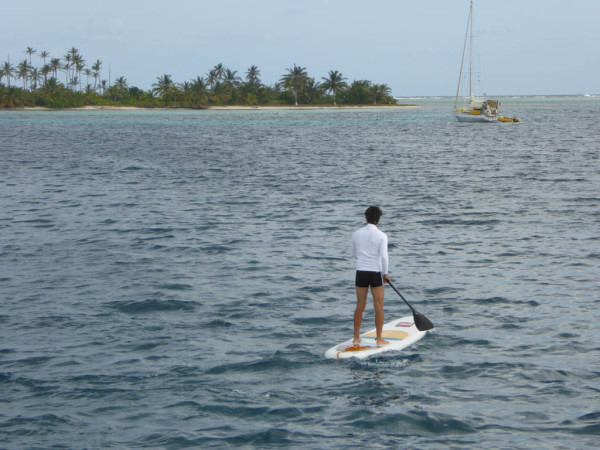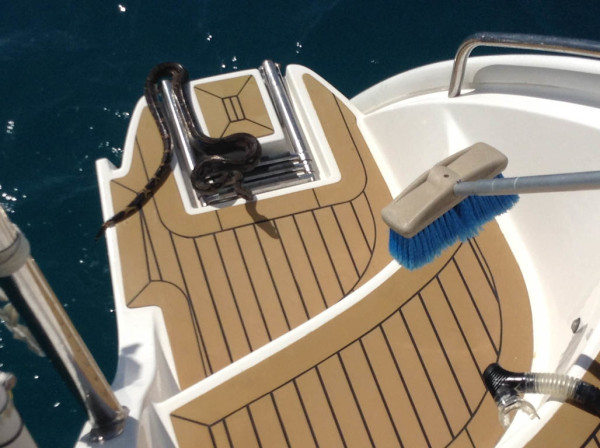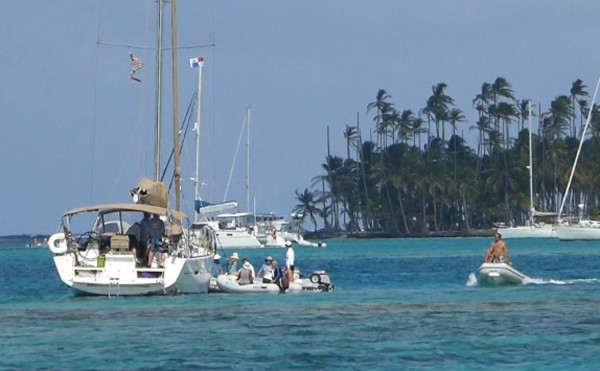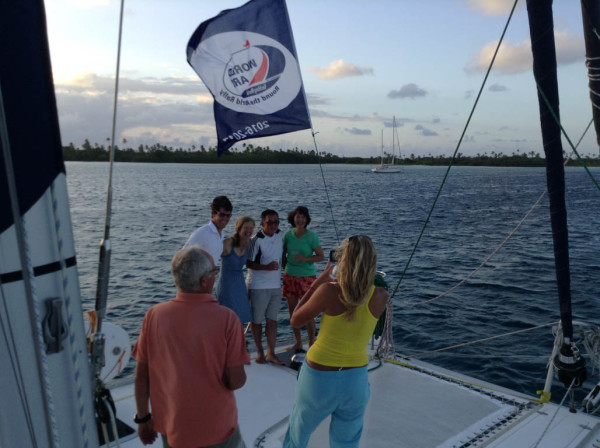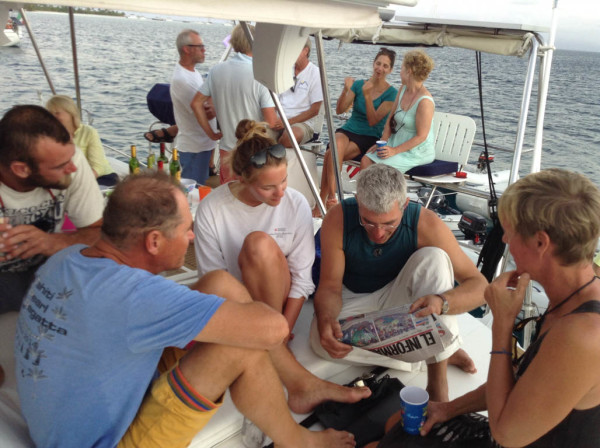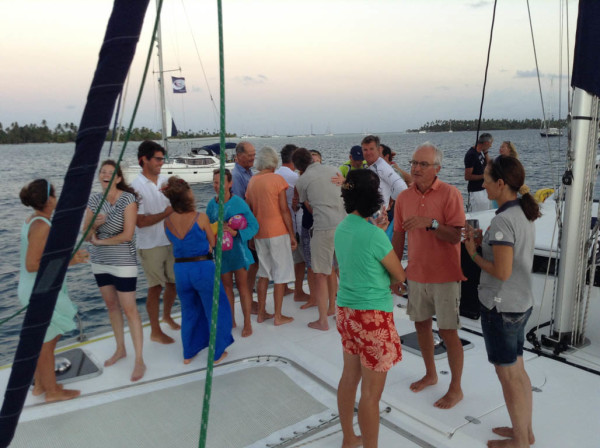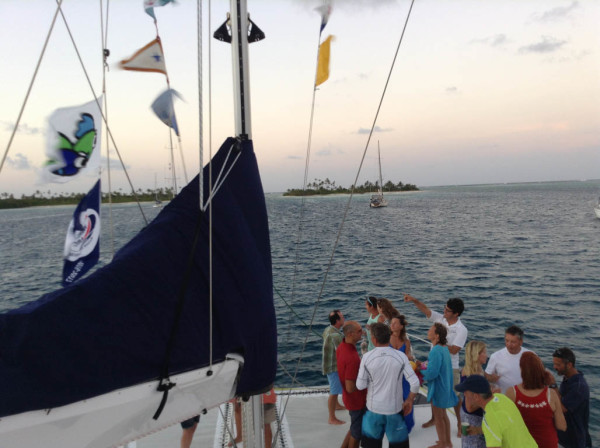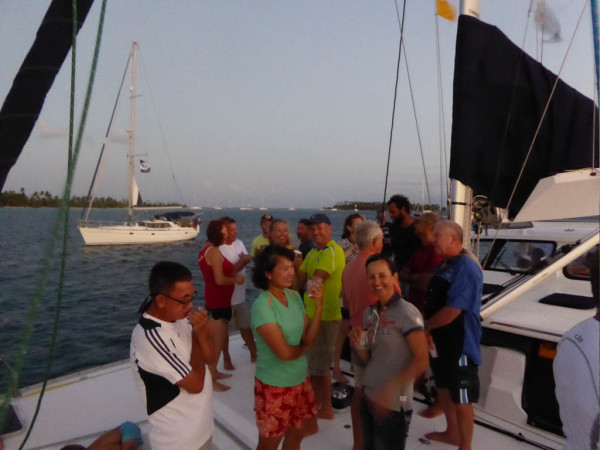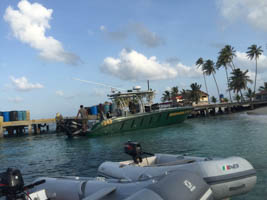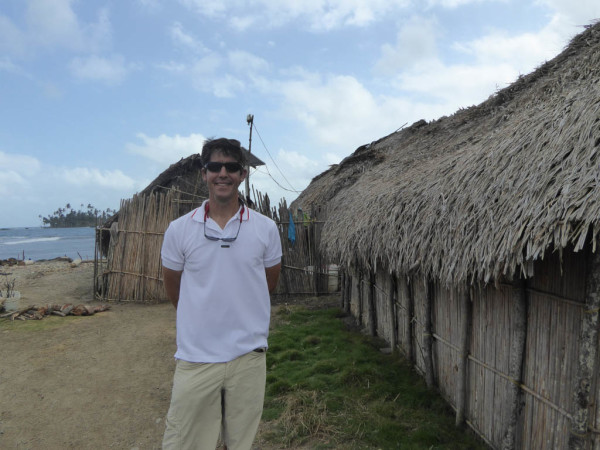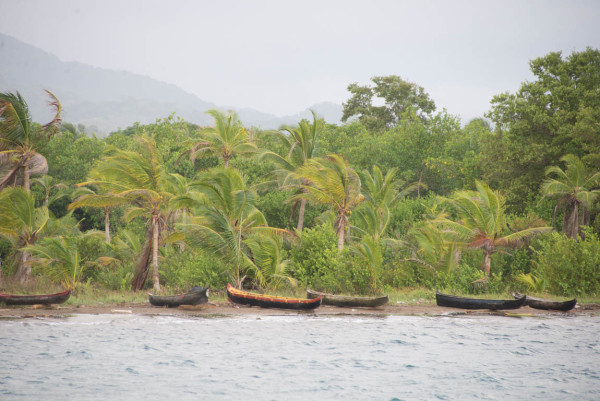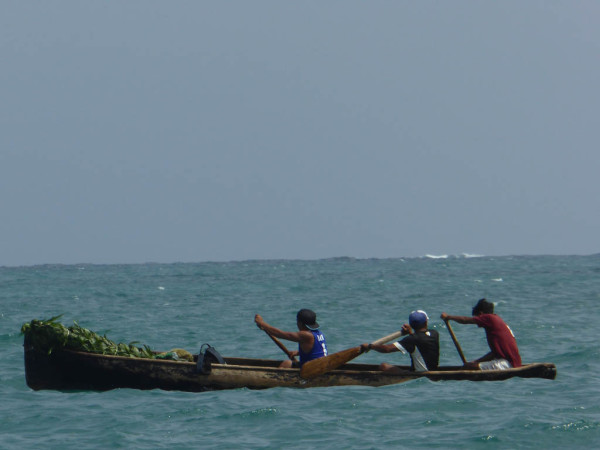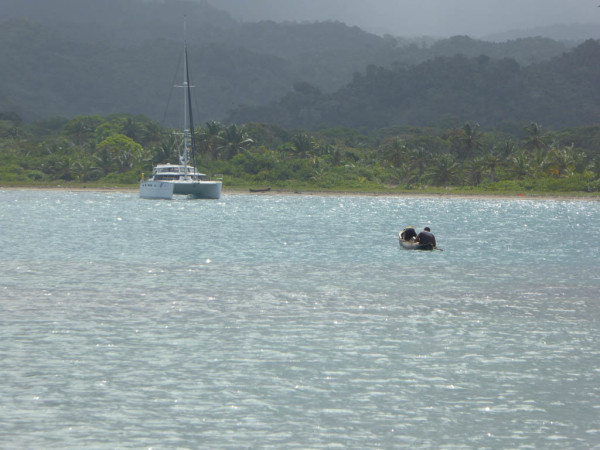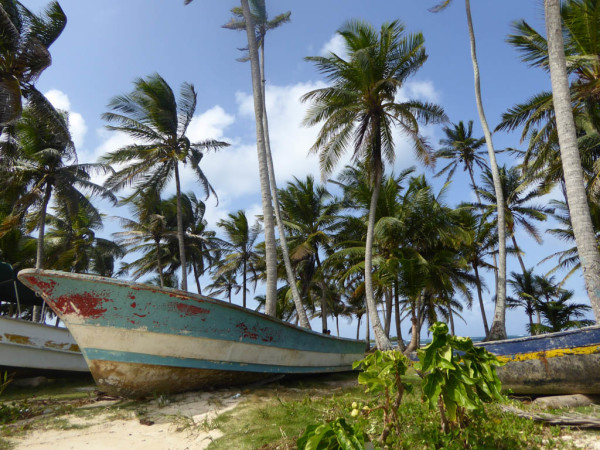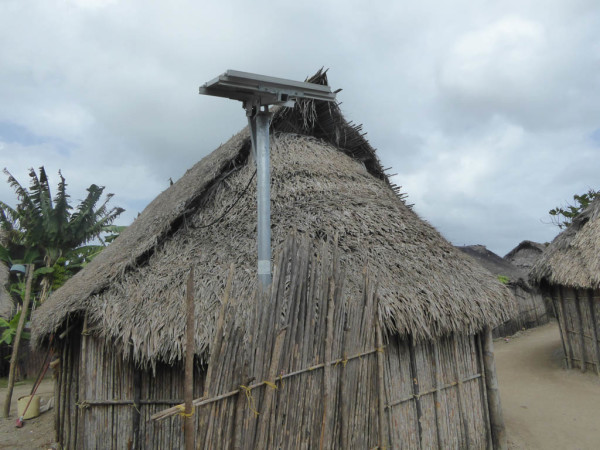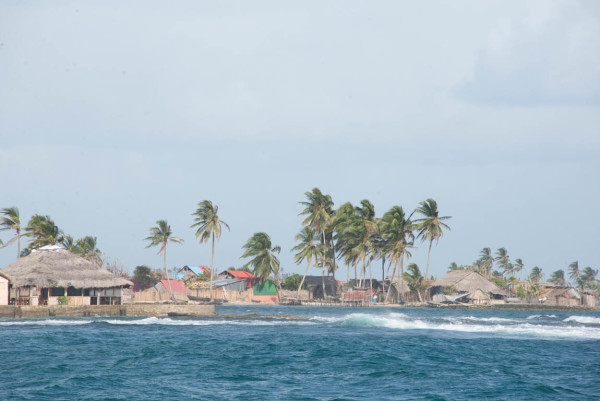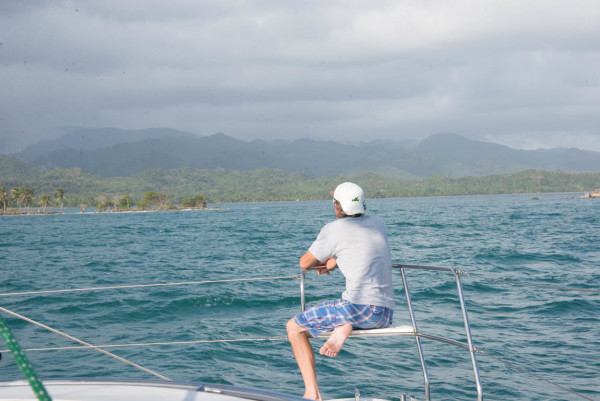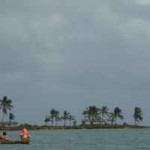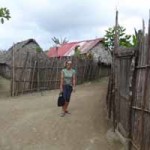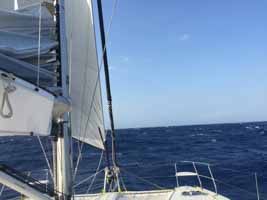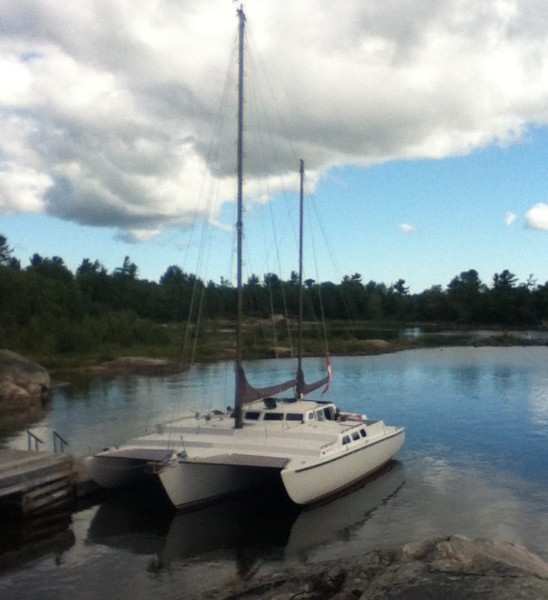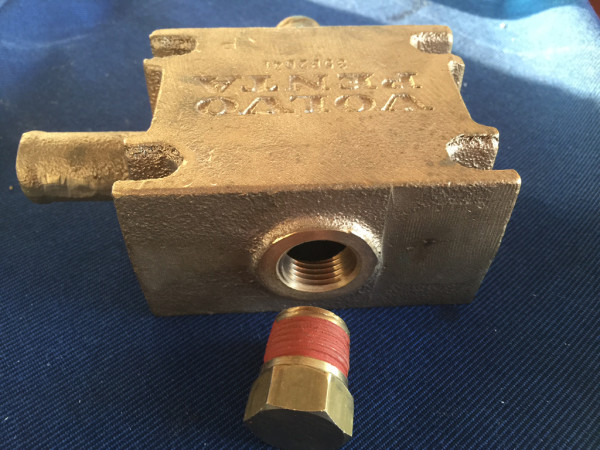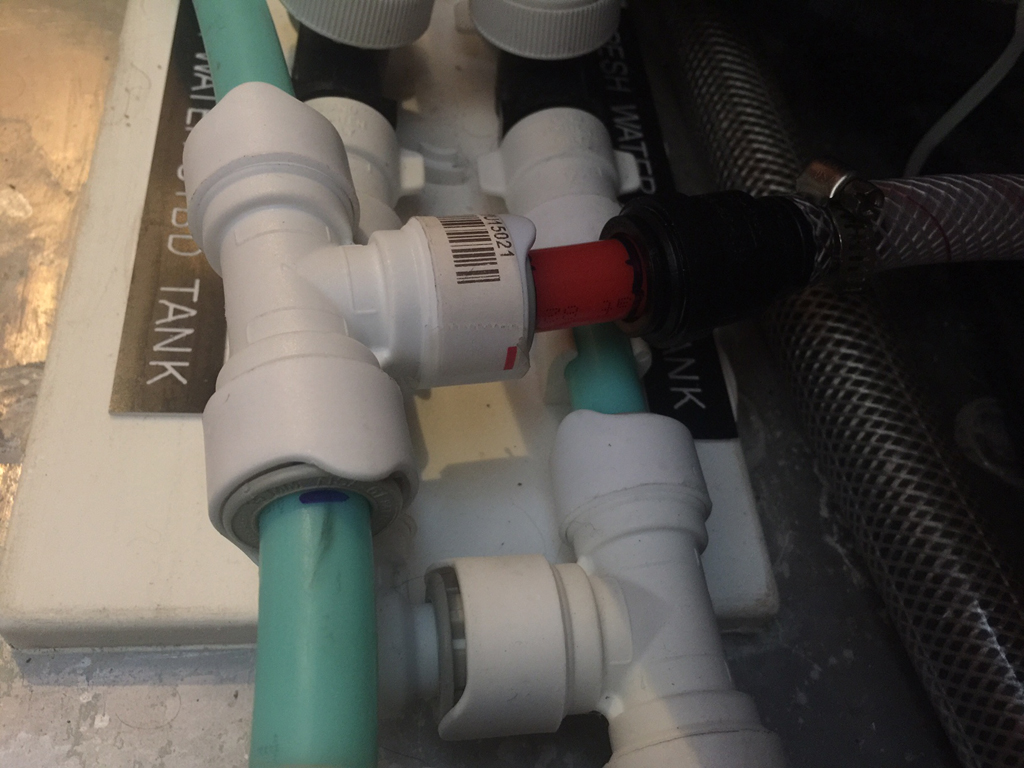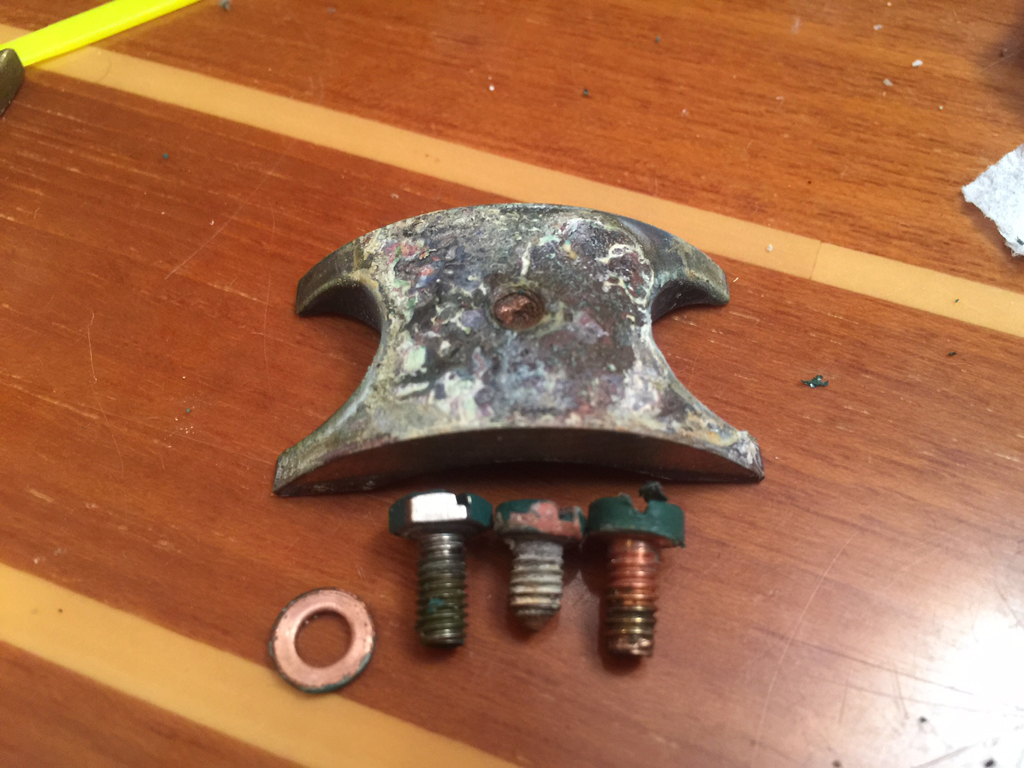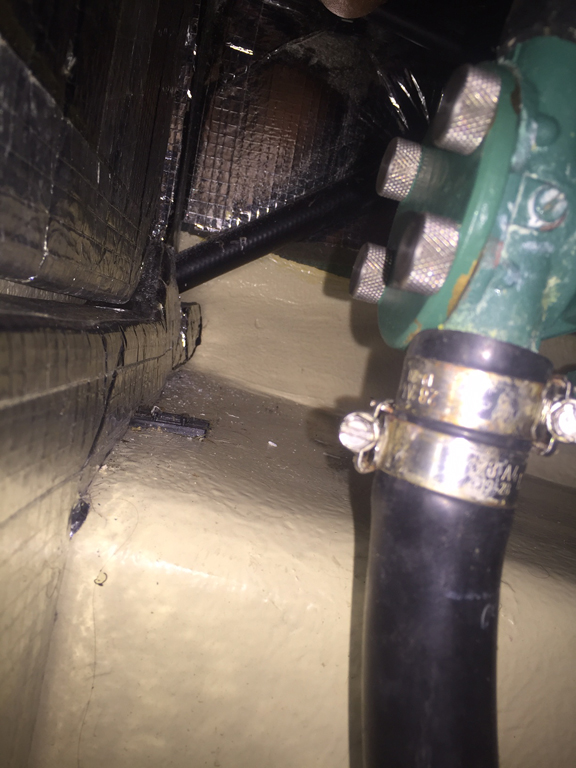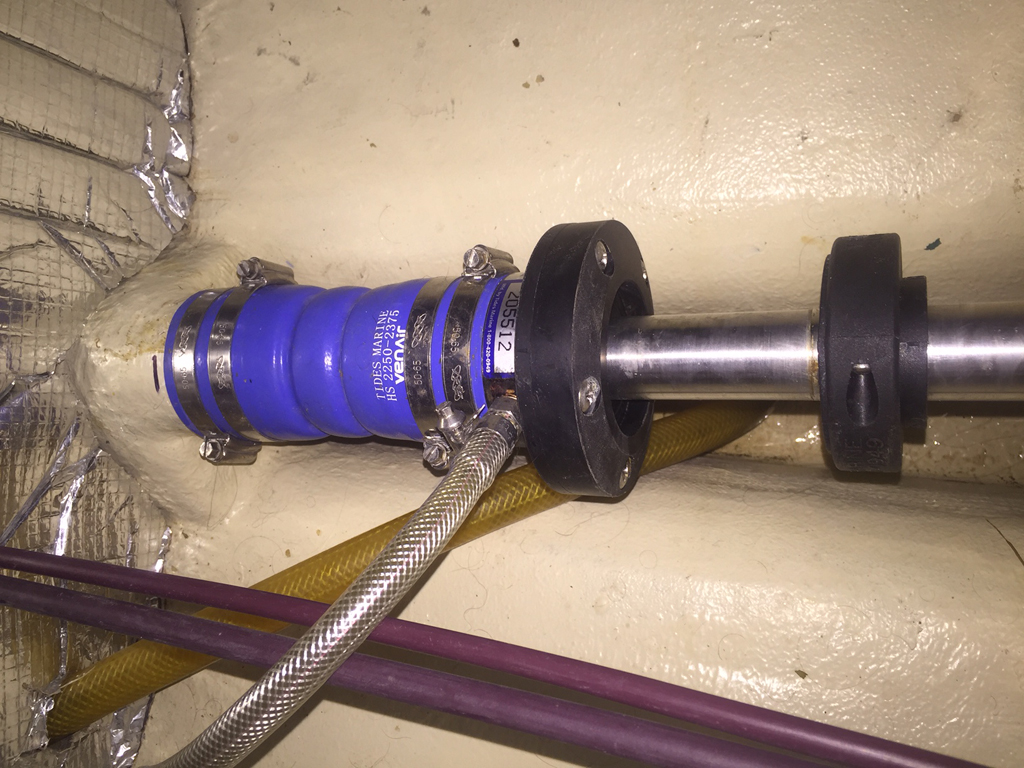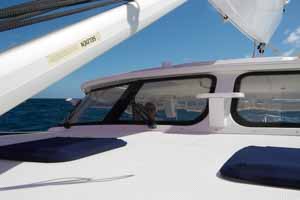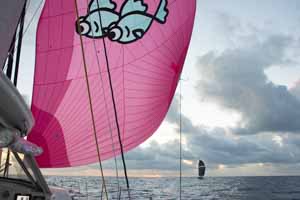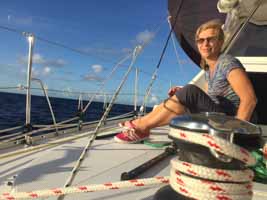We rejoined the ARC fleet three days after our unsanctioned early departure. We had missed the awards dinner for Leg 1. Two Fish grabbed a trophy – third for the catamarans. The day after we left, Port Control of Santa Marta shut down the
port. The rally organizers tried to change Port Control’s decision; I found this to be curious. Another curious decision was to make the leg to the San Blas a “racing” leg. It is a leg with heavy wind and difficult reefs. Enough of me judging things with imperfect information. Two Fish made it safely and that is the end of my job.
Our sister-ship Kristal had a great ride downwind, testing her new third reef in the main sail in 30-40 knots of breeze. With a tiny main and tiny genoa, the boat was sprinting along at double-digit speeds. They passed a racy monohull who responded with hoisting more sail area and then a few minutes later the monohull had a dramatic broach (tipped on her side).
We had fun helping a fellow ARC boat come into the harbor. They arrived just as the sun had set. We turned on every light on the boat. We radioed them to let them
know there was plenty of room to anchor off our stern. I then watched their AIS path on the chartplotter and offered assurances. They were very appreciative of the help and the electronic tracks we had given them back in Santa Marta. We now have an open bar awaiting us on another boat.
The morning in Swimming Pool anchorage started early as I boarded the paddleboard to greet every ARC boat and invite them to drinks aboard Two Fish. The anchorage is large so it took almost two hours to reach all of the boats. My speed was slowed by the wind but the real speed killer was my need to catch up with each boat. I do not mind a good chat. My paddleboard attracted a ray as I passed over shallow water.
James has been doing many great things for Two Fish during his stay. His Antares claim to fame is that he built the deck mold. His Two Fish claims to fame are many but today he was after a noise in the guest cabin that sounded like shrimp eating. Gail overheard the conversation and was concerned as she took it literally. It was a bit of the core rubbing. At first this was mis-diagnosed as delamination. Good news it was nothing of the kind. When James and Jackie are not trying to make Two Fish the best Antares ever built, they spend time swimming, spotting turtles and eating potato chips. Gail and I made another repair to the boat. The autopilot had been making small unnecessary turns. The owners forum reminded me of the bonehead move we had done. The extra Volvo Oil and Fuel filters were too close to the fluxgate compass and were confusing it. Filters moved and our autopilot’s behavior was back to normal today.
While I was out paddling, there was plenty of adventure on Two Fish. Jackie was adjusting the cushion on the lounge chair and found a 5 foot snake underneath. Since the first telling of the story it has grown to 6 feet. She quickly exited the area and summoned James. He also decided to summon some help and walked over to Gail at the bow. “Gail, we have a situation”, she heard, wondering what it could be. “We have a snake aboard”, he said. It took a few second to digest this information as she walked forward. They pointed out where it was and waited for some action. Fortunately, the boat brush
was out of the locker so Gail asked James to grab it. Jackie went to get the boat hook. With James standing by on broom duty, Gail flipped the cushion off the snake with the boat hook. The snake raised its head and stuck out its tongue. Gail shoved it towards the stern and James joined in with the brush. A few minutes later the snake was off the boat via the stern steps, but not before Jackie took a parting photo. The snake seemed to sink to the bottom, but we are not one hundred percent sure. The conversation afterward mourned the snake. Gail thought she should have put it in a trash bag and had me paddle it to shore.
A bunch of theories have arisen as to his provenance. Did mister snake sneak aboard via the dinghy when we visited the Southern San Blas? Or, did the snake board while Two Fish was on the hard in Grenada? Is there a family of snakes living in the guest cabin? We think we have checked everywhere. When I returned to the boat, I was chided for not being appreciative of the gravity of a snake visit. In the past week we have caught 8 flying flying, 2 sardines and snake without taking the pole out of the locker. We also will be eating fresh sword fish, a gift from another rally boat.
With the excitement of the snake wearing off we spotted new adventure on the horizon. A non rally boat had put her self on the reef. The skipper had told me he looked away for a moment. The folks on the bow were pointing to turn but all too late. The first 10 feet of the boat were high and dry. The bow thruster was out of the water. We were the first dinghy on the scene. I had brought a 200 foot line along as well. They were dumping their water tanks but this not a solution.
The small tide was going out and this only made the situation worse. I spoke to the skipper and proposed that we help him heel the boat over using and anchor attached to his mast. His crew tried to get out their kedge (secondary anchor) but it was deeply buried in the locker. In the intermin 6 other dinghies had arrived. Some with 40hp engines and eager to use their rpm’s. The crowd convinced the skipper that shoving him off the reef was the right call. Swimmers in the water scurried away in fear and the boat was shoved. More digging of coral by the swimmers and more shoving and he was free. Some cosmetic damage to the rudder but otherwise the boat seemed ok. Hint do not buy a used Dufour 50 from Los Angles.
At 5 pm the ARC rally folks started arriving at Two Fish for the party. It did not take long to realize the fellow ralliers are awesome. They came with such kindness, great gifts and super conversation. These are going to be great folks to spend the next year with. We broke the record for the most people on Two Fish at one time: 51.
- Kristal in the background
- A full boat
- More people
- Anchorage
- Head to the bow
Some cruisers stay anchored in the San Blas for months. They make their own water, eat food from their extensive stores, but have no home for their trash. A social event is the weekly trash burn. This was announced on the radio yesterday. One of our friends radioed in and asked for details. Immediately thereafter, someone interrupted the announcement telling us in a stern voice that rally boats do not burn trash. No more comments.
